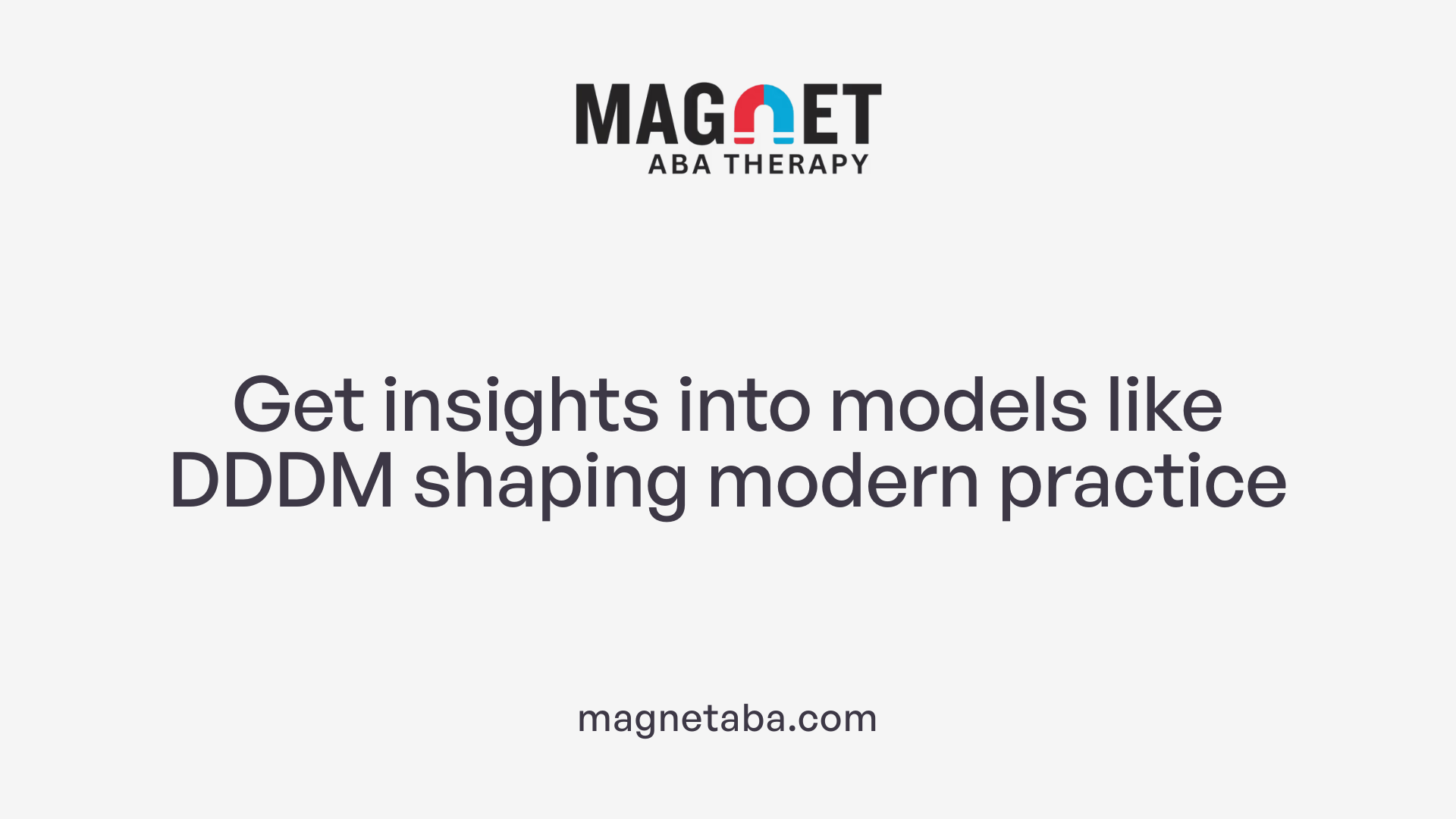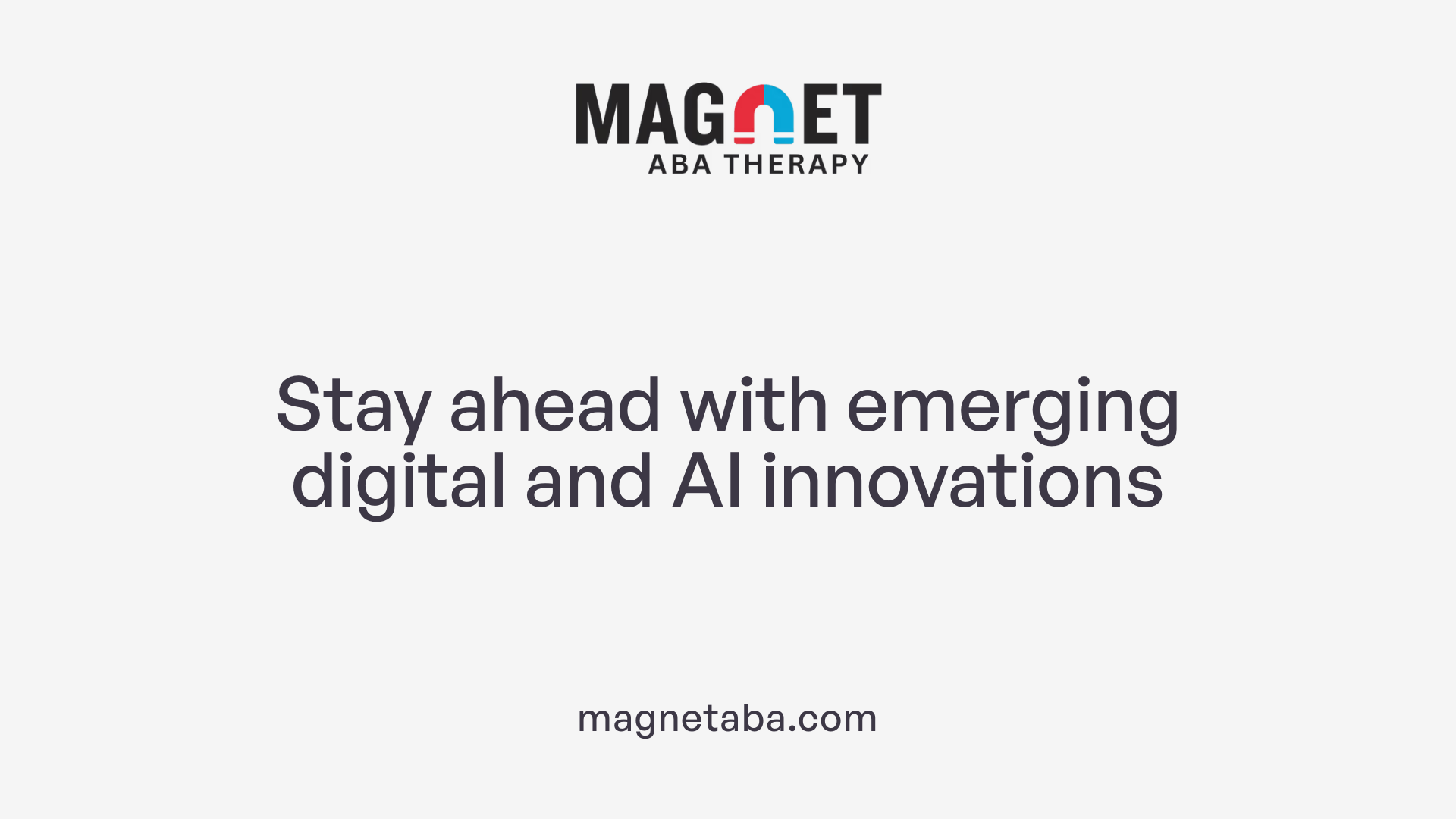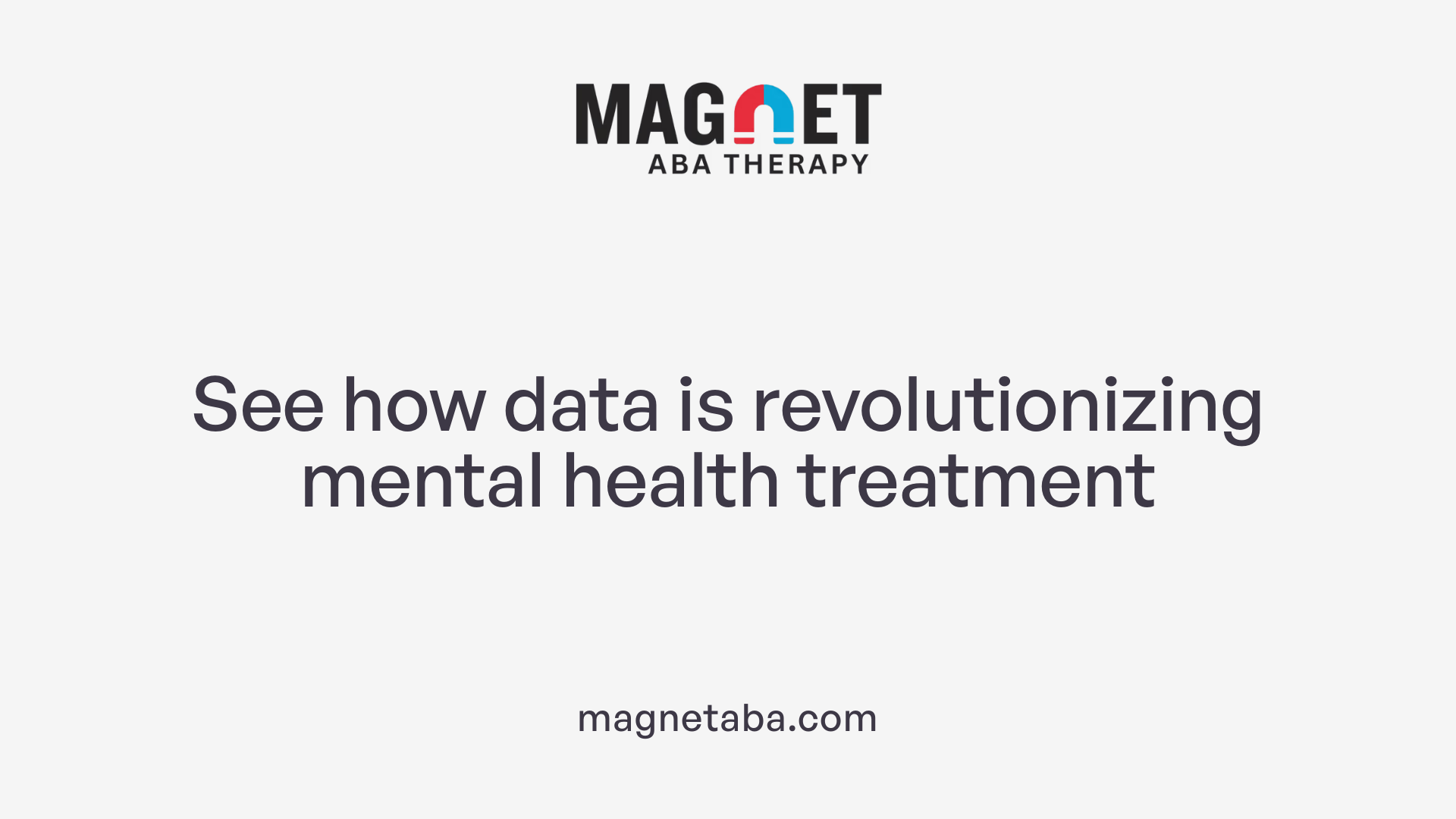Introduction: The Power of Data in Modern Therapy
In recent decades, the integration of data into therapeutic practices has revolutionized mental health care. Leveraging vast amounts of information—from clinical assessments to real-time monitoring—clinicians can now make more informed, personalized decisions that enhance treatment outcomes. This article explores the various methods, frameworks, and evidence underpinning data-driven decision-making in therapy, highlighting its implications across mental health and broader healthcare contexts.
Evolution and Significance of Outcome Measurement in Therapy

How is data used in mental health therapy practices?
Data has become integral to modern mental health therapy, enabling clinicians to monitor patient progress systematically and make informed adjustments to treatment plans. Techniques such as routine outcome monitoring (ROM) utilize standardized measures to track symptoms, functional improvements, and overall well-being throughout therapy.
Technological advancements have expanded data collection capabilities. Computerized assessment tools provide quick, accurate feedback, while digital dashboards visualize trends over time, offering clinicians clear insights. Predictive algorithms and machine learning models analyze large datasets to identify patterns, predict treatment responses, and personalize interventions.
Furthermore, passive digital data collection—such as activity levels, sleep patterns, and social media use—adds objective context to subjective reports. Clinical support tools like the Trier Treatment Navigator (TTN) demonstrate how integrated decision support systems can improve treatment selection and monitor ongoing progress.
Overall, these data-driven methods enhance resource allocation, improve treatment efficacy, and increase transparency and accountability in mental health services. They foster a collaborative environment where both clinicians and patients are engaged in understanding progress and adjusting care responsively.
How does data inform decision-making in therapy settings?
Data significantly enhances decision-making in therapy by providing a factual basis for selecting interventions, predicting outcomes, and evaluating effectiveness. Recent technological developments allow the integration of psychometric data, real-time monitoring via ecological momentary assessment (EMA), and predictive models to facilitate tailored treatment strategies.
Measurement-based care systems enable clinicians to observe how individual patients respond to various approaches, facilitating timely adjustments. For instance, prognostic models like the Prognostic Index (PI), Logistic Response Indicators (LRI), and Expected Treatment Response (ETR) can guide initial treatment choices based on patient-specific prognosis.
During therapy, continuous data collection from standardized assessments helps identify which modules or strategies yield the best outcomes for each patient. Matching patients to clinicians based on clinical features and worker effects can further optimize treatment effectiveness.
However, challenges such as data fragmentation, technical infrastructure gaps, and policy restrictions limit widespread use. To maximize benefits, healthcare organizations should adopt standardized data management systems, ensure data security, and promote literacy among clinicians regarding data interpretation.
While barriers remain, the overall trend points toward more personalized, efficient, and responsive therapeutic decisions driven by high-quality data. This systematic approach aligns with a broader shift toward evidence-based practice, ensuring that interventions are both effective and tailored to individual needs.
Technological Advances: Tools Enabling Data-Driven Therapy

What data-driven methods and frameworks are used for therapeutic decision-making?
Over the past two decades, the integration of technology has transformed how clinicians measure outcomes and support decision-making in therapy. One prominent framework is the Data-Driven Decision Making (DDDM) process, which systematically guides occupational therapists through stages such as identifying participation challenges, conducting assessments, and monitoring progress.
The DDDM framework, developed by researcher R. C. Schaaf, emphasizes the collection and analysis of both subjective and objective data, enabling therapists to tailor interventions effectively. It involves steps like generating hypotheses based on observed data, designing personalized interventions, and evaluating outcomes through regular measurement. This structured approach ensures clinical reasoning is supported by concrete data, aligning with modern standards of evidence-based practice.
In addition to frameworks like DDDM, advanced analytical methods are increasingly employed. Machine learning algorithms, including deep learning and reinforcement learning, help predict treatment responses and develop response profiles for different patient subgroups. Markov decision processes are used to make optimal treatment choices under uncertainty, continually adapting as new data becomes available.
Electronic health records (EHRs) enhance this process by providing comprehensive datasets that include patient demographics, assessments, progress notes, and treatment outcomes. Formal concept analysis (FCA) within EHR systems allows clinicians to identify patterns in larger patient groups, assess how lifestyle factors influence health, and visualize these relationships for better decision-making.
Such methods converge to create a personalized, dynamic approach to therapy. They allow clinicians to predict which interventions are most likely to succeed based on historical and real-time data, improving the precision of care. Combining statistical modeling, predictive algorithms, and rich data sources fosters evidence-supported strategies tailored to each individual's unique needs.
| Method/Framework | Description | Benefit |
|---|---|---|
| DDDM | Systematic collection and analysis of clinical data for decision support | Guides intervention and monitors progress |
| Machine Learning Models | Algorithms that predict treatment responses based on data | Personalizes therapy, improves outcomes |
| Markov Decision Processes | Mathematical models for optimal sequential decision-making | Enhances adaptive treatment planning |
| Electronic Health Records (EHR) | Digital collection of patient information, assessments, and outcomes | Facilitates comprehensive data analysis |
| Formal Concept Analysis (FCA) | Visualization of patient groups and correlations | Supports personalized interventions |
These technological advances underscore the importance of integrating diverse data sources and analytical tools. As digital platforms and artificial intelligence continue evolving, their application in clinical decision-making promises to make therapy more precise, efficient, and responsive to individual patient needs.
How do digital tools support better therapeutic outcomes?
Digital dashboards and visualization tools play a crucial role in translating complex data into actionable insights. By providing real-time visual summaries of patient progress, these tools help clinicians identify trends quickly and adjust interventions accordingly.
Automated scoring within electronic health records streamlines the evaluation process, saving time and reducing errors. When therapists have immediate access to up-to-date progress measures, they can make informed decisions about continuing, modifying, or changing treatment strategies.
Furthermore, client engagement increases when they are involved in reviewing assessment results and progress reports. Digital tools enable shared decision-making, fostering a collaborative therapeutic environment.
Most importantly, these technological solutions support ongoing outcome measurement—comparing pre- and post-treatment data to evaluate progress and refine therapy plans. By consolidating data visualization, automated reporting, and client involvement, digital tools contribute significantly to the efficacy of modern therapy practices.
Frameworks and Models for Data-Guided Therapy

How are data-driven frameworks like DDDM implemented in therapy settings?
Data-driven frameworks such as the Data-Driven Decision Making (DDDM) process are increasingly integrated into occupational and mental health therapy practices. The implementation begins with the systematic collection of diverse client data, including baseline assessments, ongoing progress notes, standardized outcome measures, and observational data.
Therapists utilize a structured 11-step process that involves identifying participation challenges, describing client functioning, conducting standardized assessments, recognizing strengths and barriers, generating hypotheses, and designing targeted interventions. Regular measurement of outcomes before, during, and after treatment helps track progress and inform adjustments.
Clinicians record data at each stage, often through charts or statistical summaries, to visualize trends and evaluate the effectiveness of interventions. Visual tools like progress graphs facilitate quick interpretation and decision-making.
Training in data literacy and familiarity with clinical decision support tools are essential for therapists to effectively utilize the data. This approach promotes personalized, evidence-informed therapy, continually refined through empirical insights.
Overall, embedding DDDM into clinical workflows encourages a systematic, reflective process aligned with best practices for client-centered care.
How do predictive models contribute to personalized treatment?
Predictive models leveraging algorithms, machine learning, and large datasets help identify which factors predict a positive response to specific treatments. These models generate response profiles and prognosis indices that guide clinicians in making tailored treatment decisions.
Before therapy commences, measurement-based models can assist in allocating patients to the most suitable interventions based on their predicted outcomes. This pre-treatment support helps optimize resource use and enhances the likelihood of success.
During therapy, understanding process-outcome relations allows therapists to adapt modules and strategies to each patient's evolving symptom profile. For example, models can highlight which therapeutic techniques are most effective for subpopulations with certain characteristics.
These models also enable prediction of potential challenges, such as risks for non-response or adverse events, allowing clinicians to proactively modify approaches. In doing so, predictive analytics contribute significantly to the personalization of psychological and occupational therapies, improving overall outcomes.
Step-by-step process for implementing data-driven decision support
Implementing data-driven decision systems involves several systematic steps:
| Step | Action | Purpose | Additional Details |
|---|---|---|---|
| 1 | Identify client participation challenges | Establish clear goals | Focus on functional limitations and client priorities |
| 2 | Describe client functioning | Gather comprehensive profiles | Use assessments, observations, and client histories |
| 3 | Make observations | Collect real-time data | Observe behaviors, engagement, and responses |
| 4 | Conduct standardized assessments | Obtain objective metrics | Use validated tools and measure progress |
| 5 | Identify client strengths and barriers | Recognize factors influencing outcomes | Inform intervention planning |
| 6 | Generate hypotheses | Formulate possible explanations | Use data patterns to hypothesize about responses |
| 7 | Design personalized interventions | Tailor approaches | Based on data insights and client needs |
| 8 | Measure outcomes | Track progress | Employ pre- and post-intervention assessments |
| 9 | Monitor progress | Continuously evaluate | Use regular check-ins and adaptive strategies |
| 10 | Visualize data | Support understanding | Create charts, graphs, and dashboards |
| 11 | Adjust interventions | Refine treatment | Use ongoing data insights to optimize care |
This structured workflow ensures that therapy is continually informed by empirical evidence, maximizing effectiveness.
Additional insights
The integration of predictive algorithms, machine learning, and comprehensive data collection aims to create dynamic, personalized treatment pathways. Initiatives like the Trier Treatment Navigator exemplify these efforts, providing evidence-based decision support that enhances outcomes.
Effective implementation requires attention to data privacy, workflow compatibility, and validation of tools. Therapists and clinicians must be trained to interpret data accurately and incorporate findings into clinical judgment.
In digital health, automated scoring and visualization tools embedded in electronic health records streamline data usage, making real-time trends accessible at point-of-care.
Overall, adopting structured, data-informed frameworks positions healthcare providers to deliver more precise, responsive, and effective therapy tailored to each individual's unique needs.
Evidence Supporting Data-Driven Therapy Practices

What evidence exists supporting the use of data-guided approaches in therapy?
Over recent decades, substantial evidence has emerged to validate the incorporation of data-driven methods into therapeutic practice. Advances in outcome measurement tools, including psychometric assessments, electronic health records (EHR), and real-time feedback systems, allow clinicians to personalize treatment strategies and track progress effectively.
One significant development is the use of predictive models and algorithms, which leverage large datasets to identify response patterns and symptom profiles within subpopulations. These models—utilizing machine learning and extensive analytics—assist in selecting the most promising treatment options tailored to individual prognosis, increasing the likelihood of successful outcomes.
Routine outcome monitoring (ROM) and feedback tools, such as the Trier Treatment Navigator (TTN), have demonstrated consistent benefits. They help clinicians detect patients at risk of treatment failure early, enabling timely adjustments, which improves overall treatment retention and effectiveness.
Large-scale data analysis projects, like the International Evidence for Supporting Outcomes (IESO), have used extensive datasets to refine diagnostic categories and intervention strategies. These efforts lead to faster recovery times and better management of mental health conditions across various populations.
In addition, integrating data from diverse sources—including assessments, progress notes, and standardized outcome measures—supports a comprehensive understanding of client progress. Automated scoring in systems like TheraPlatform allows for quick data interpretation, making real-time decisions feasible.
The accumulative evidence indicates that data-informed decisions enhance treatment personalization, reduce costly inefficiencies, and ultimately improve patient outcomes across different settings and conditions.
How do large-scale analytics and predictive models influence treatment pathways?
Large datasets analyzed through sophisticated models enable clinicians to classify patients more accurately and predict their response to specific interventions. These insights facilitate evidence-based personalized treatment plans, ensuring that clients receive interventions most likely to work for their profile.
Predictive algorithms also help determine prognosis indices such as the Prognostic Index (PI), Landing Response Indicator (LRI), and Estimated Treatment Response (ETR). These models give clinicians powerful tools to allocate resources and make informed initial treatment decisions.
Within therapy, process-outcome relations—such as dynamics of symptom interactions—are analyzed to tailor modules and strategies to specific patient needs. Matching patients to therapists based on clinical features and worker effects further enhances treatment effectiveness.
In pediatrics and adult rehabilitation, data-driven practices have shown promise in creating evidence-based practices that directly improve intervention efficacy and patient satisfaction.
Benefits observed in specific populations, such as autism
In populations with complex needs, such as children with autism spectrum disorder (ASD), data-informed approaches can significantly improve outcomes. Personalized intervention plans based on comprehensive assessments, including behavioral, cognitive, and developmental data, lead to more targeted and effective therapies.
Longitudinal assessments like ecological momentary assessments (EMA) reveal symptom interactions and help set personalized treatment targets. These approaches support better engagement and more measurable progress in ASD populations.
In summary, the combined evidence from research studies, large-scale data analytics, and practical implementations clearly demonstrates that data-driven practices in therapy are not only feasible but also markedly improve the precision, effectiveness, and individualization of treatment outcomes.
| Evidence Source | Application Area | Impact | Details |
|---|---|---|---|
| Psychometric and feedback tools | General healthcare and therapy | Enhanced personalization and monitoring | Real-time adjustments, improved engagement |
| Predictive algorithms and machine learning | Mental health and rehab | Better response prediction and stratification | Identification of subpopulations, response profiling |
| Large-scale analytics (IESO) | Diagnostic refinement and treatment design | Faster recovery and tailored care | Data aggregations lead to refined interventions |
| Routine Outcome Monitoring (ROM) | At-risk populations | Reduced dropout, increased retention | Early detection of treatment failure |
This body of evidence underscores the transformative potential of data-driven methods to optimize therapeutic outcomes, tailor interventions, and advance precision in healthcare provision.
Implementation and Ethical Considerations in Digital Data Use

How are data-driven frameworks like DDDM implemented in therapy settings?
Data-driven frameworks such as the Data-Driven Decision Making (DDDM) process are integrated into therapy practices by systematically collecting a wide range of client data. This includes observations during sessions, standardized assessment results, progress notes, and intervention outcomes. Therapists use tools like charts, statistical analyses, and visual trend displays to monitor client progress over time.
The 11-step DDDM process offers a structured approach: it begins with identifying participation challenges and describing client functioning, then moves through making observations, conducting assessments, and identifying strengths and barriers. Following this, practitioners generate hypotheses about the client’s condition, design targeted interventions, and measure outcomes. Regular monitoring and adjustments ensure the therapy remains personalized and effective.
Training clinicians in data literacy and familiarity with clinical decision support systems is a vital component. Such education helps therapists interpret complex data, avoid biases, and make informed decisions. This continuous cycle of data collection and analysis fosters personalized, evidence-informed therapy tailored to individual needs, ultimately leading to better treatment outcomes.
Overall, the implementation of DDDM promotes a clinical environment where empirical data guides every step, from initial diagnosis to ongoing intervention adjustments, emphasizing personalized care driven by measurable evidence.
What are the critical ethical issues related to data use in therapy?
Handling client data responsibly in therapy settings involves strict adherence to ethical standards that prioritize confidentiality and privacy. Therapists must obtain informed consent from clients before collecting and using their data, ensuring they understand how the data will be used and protected.
Data security is a major concern, especially with digital tools and electronic health records (EHRs), which must be safeguarded against breaches. Maintaining the integrity and accuracy of data is also essential, as unreliable or biased data can compromise treatment quality.
Recognizing and mitigating potential biases in data collection and analysis are crucial. Using multiple sources of data, including subjective reports and objective measures, helps create a comprehensive, balanced picture. Transparency about data use and limitations fosters trust between clients and clinicians.
Providers emphasize that digital health tools must be validated through rigorous scientific testing and adhere to evidence-based standards. Ensuring tools perform accurately and reliably before integrating them into clinical practice helps maintain ethical integrity.
Moreover, respecting privacy laws such as HIPAA, and securing all data against unauthorized access, are core legal obligations. When using digital data, clinicians must also be aware of the risks of over-collection or misinterpretation that could jeopardize a client’s wellbeing.
In conclusion, safeguarding client confidentiality, ensuring data accuracy, and maintaining transparency are fundamental to ethically integrating digital data use in therapy. Combining these principles with ongoing training and robust security practices helps foster trust and uphold professional integrity in data-driven practices.
Future Directions: Digital and Data Innovations in Therapy

Emerging technologies and AI integration
The field of therapy is rapidly evolving with the integration of advanced digital tools and artificial intelligence (AI). These innovations enable more precise and personalized treatment approaches by analyzing vast datasets, including patient histories, responses, and real-time assessments. AI algorithms can identify patterns and predict treatment outcomes, supporting clinicians in making more informed decisions.
One notable development is predictive modeling using machine learning, which helps determine the likelihood of treatment success for individual patients. These models utilize extensive data sources such as demographic information, clinical features, and ongoing response patterns. The goal is to tailor interventions more accurately, reducing trial-and-error approaches.
Moreover, digital applications are increasingly incorporating natural language processing (NLP) to analyze client communications, capturing subtle cues that might inform treatment adjustments. Virtual therapy platforms integrated with AI can provide immediate feedback and support, extending care beyond traditional sessions.
Real-time data assessments and alerts
Real-time data collection tools such as ecological momentary assessment (EMA) and wearable devices have transformed therapy practices. These tools monitor symptoms, mood, and behavior continuously, providing instant data that can be visualized to identify emerging issues or improvements.
Automated systems can generate alerts for therapists or patients when significant changes occur. For example, an increase in suicidal ideation detected through app-based assessments can trigger immediate intervention or safety protocols. This proactive approach enhances patient safety and engagement.
Electronic health records (EHRs) with integrated outcome measures facilitate ongoing progress tracking. Automated scoring and graphing of data allow clinicians to observe trends over days or weeks, adjusting treatment plans dynamically.
Potential research and practice evolution
Looking ahead, these technological advances are poised to reshape both research and clinical practice. Large-scale data analysis will enable the identification of universal and subgroup-specific predictors of treatment response.
Research can leverage these insights to develop new prognostic tools and refine existing models, such as the Prognostic Index (PI) or the Treatment Response Profile (TRP). These models will become more accurate, helping clinicians allocate resources and select interventions earlier in the care process.
In practice, therapists will increasingly rely on integrated digital platforms that combine data-driven decision support, client engagement, and outcome monitoring. These systems will promote a cyclical process where ongoing data collection feeds back into treatment planning and refinement.
Furthermore, ethical considerations around data security, privacy, and bias mitigation will remain central. Ensuring that AI algorithms and digital tools adhere to rigorous standards will be essential for widespread adoption.
Ultimately, continuous technological innovation aims to make therapy more accessible, personalized, and effective, contributing to better long-term outcomes for diverse patient populations.
| Future Development Area | Description | Impact |
|---|---|---|
| AI-driven predictive models | Using machine learning to forecast treatment response | More personalized, efficient care |
| Real-time monitoring tools | Continuous symptom and behavior tracking | Proactive intervention, improved safety |
| Digital platform integration | Combining assessments, decision support, and engagement | Enhanced clinical workflow, better outcomes |
| Ethical and security considerations | Ensuring data privacy and bias prevention | Trustworthy, equitable care |
This ongoing technological shift holds promise for transforming therapeutic practices, making interventions more responsive and tailored to individual needs, thereby improving overall mental health treatment success.
Conclusion: The Transformational Impact of Data on Therapy

What evidence exists supporting the use of data-guided approaches in therapy?
There is strong and growing evidence demonstrating the effectiveness of data-driven methods in therapeutic settings. Over the past two decades, advancements in outcome measurement and data assessment tools have significantly improved clinicians’ ability to personalize treatment plans.
Recent technological innovations include computerized feedback systems and electronic health records that automatically score outcome measures. These tools enable real-time monitoring of patient responses, allowing therapists to adjust interventions promptly and effectively.
Predictive models using machine learning and large datasets help identify which treatments are most likely to work for an individual, based on symptom profiles and prognostic indices like PI, LRI, ETR, and PAI. This personalized approach has been shown to enhance treatment success and reduce trial-and-error in therapy.
Routine outcome monitoring (ROM), coupled with feedback systems like the Trier Treatment Navigator (TTN), demonstrates that ongoing assessment can improve treatment adherence and outcomes, especially for patients at higher risk of failure.
Large-scale data initiatives like the Improving Effectiveness in Specialization Outcomes (IESO) project collect extensive treatment data that contribute to refining diagnostic classifications and tailoring interventions even further. This evidence underscores how data analytics can lead to more efficient, faster recovery and better management of mental health and rehabilitation conditions.
How do these approaches benefit clinical practice?
Data-informed practices foster a more systematic, objective, and personalized approach to therapy. They enhance clinical reasoning by providing concrete data from assessments, progress notes, electronic tracking, and outcome measures.
Clinicians can visualize progress through trend analyses, identify patterns in symptoms and responses, and make informed decisions about intervention strategies. Such precision improves the likelihood of successful outcomes.
Furthermore, involving clients in reviewing data enhances engagement and shared decision-making. Objective feedback empowers both therapists and clients to set realistic goals and adjust treatment plans dynamically.
In occupational therapy and pediatrics, this approach has demonstrated improved evidence for intervention effectiveness, promoting better client participation and functional gains. For primary care providers, digital tools offering overall wellbeing assessments help monitor health and detect issues early, facilitating timely and appropriate interventions.
Why is continuous research and adaptation crucial?
While current evidence supports data-guided therapy, ongoing research is necessary to refine these tools and ensure their validity, reliability, and ethical application. As digital health technologies evolve, so must the frameworks guiding their integration into routine practice.
Further studies are needed to establish standardized protocols, improve predictive algorithms, and examine long-term outcomes. Adoption of validated tools that minimize clinician burden and protect patient privacy remains critical.
Embracing a culture of continuous learning and adaptation will maximize the benefits of data-informed decision making. This proactive approach can lead to innovative models of care, reducing costs, improving efficiency, and ultimately delivering more effective, personalized therapy experiences.
| Aspect | Current Status | Future Direction | Benefits |
|---|---|---|---|
| Evidence base | Substantial but evolving | Ongoing validation and refinement | Increased reliability and applicability |
| Technologies | Automated scoring, feedback systems, predictive algorithms | Integration with AI and big data | More accurate predictions and personalization |
| Implementation | Varied across settings; some barriers remain | Enhanced workflows, provider training | Easier adoption and consistent use |
| Ethical considerations | Confidentiality, privacy, bias mitigation | Improved standards, transparency | Trustworthiness and safety |
This continuous development will support clinicians in harnessing the full potential of data, leading to more effective, efficient, and personalized therapeutic interventions.
Harnessing Data for Better Therapeutic Outcomes
The integration of data into therapeutic decision-making marks a pivotal shift toward more personalized, effective mental health care. As technological innovations continue to evolve, clinicians are better equipped than ever to tailor interventions, monitor progress, and adjust strategies in real time. Robust frameworks like DDDM and advanced predictive models underpin this progress, supported by substantial evidence demonstrating improved clinical outcomes. Moving forward, embracing data-driven practices, addressing ethical considerations, and fostering ongoing research will be essential to fully realizing the potential of data-enhanced therapy. Ultimately, these advancements promise not only improved patient outcomes but also a more efficient, accountable, and compassionate approach to mental health treatment.
References
- Precision Mental Health and Data-Informed Decision ...
- Creating Evidence for Practice Using Data-Driven Decision ...
- Data-driven practice
- Using Real-world Data for Decision Support
- Data Driven Decision Making Framework (DDDM)
- The Power of Data-Driven Decision Making in Healthcare
- Data Driven Decision Making Framework (DDDM)
- Creating Evidence for Practice Using Data-Driven Decision ...












